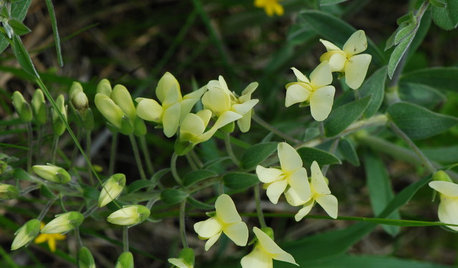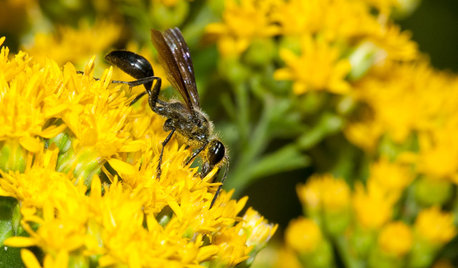Cross Pollination
roger33
14 years ago
Related Stories

FLOWERS AND PLANTSPlant Baptisia Bracteata for Blooms Pollinators Will Love
Longbract wild indigo is great in dry soil, and its spring flowers attract butterflies and bumblebees
Full Story
GARDENING GUIDESMeet the Grass-Carrying Wasp, a Gentle Pollinator of Summer Flowers
These fascinating insects nest in wood cavities and hollow plant stems
Full Story
GARDENING GUIDESAttract Hummingbirds and Bees With These Beautiful Summer Flowers
Roll out a welcome mat for pollinators to keep your landscape in balance and thriving
Full Story
GARDENING AND LANDSCAPINGBid Bad Garden Bugs Goodbye and Usher In the Good
Give ants their marching orders and send mosquitoes moseying, while creating a garden that draws pollinators and helpful eaters
Full Story
FARM YOUR YARDHello, Honey: Beekeeping Anywhere for Fun, Food and Good Deeds
We need pollinators, and they increasingly need us too. Here, why and how to be a bee friend
Full Story
GARDENING GUIDESWhat Prairies Teach Us About Garden Design
Wild spaces offer lessons for home gardeners about plants, pollinators and the passage of time
Full Story
GARDENING GUIDESGreat Design Plant: Asclepias Incarnata for a Butterfly Garden
Beautiful swamp milkweed makes it easy to help monarchs and other pollinators in eastern U.S. gardens
Full Story
EDIBLE GARDENSGarden BFFs? Why Your Vegetables Are Begging for Companion Plants
Foster friendships among plants for protection from pests, pollination support and color camaraderie
Full Story
FRUIT TREESHow to Grow Your Own Juicy Plums
Easier than other stone fruits and with a variety of colors to choose from, plums are a versatile garden addition
Full Story
SUMMER FRUITS AND VEGETABLESHow to Grow Your Own Fresh, Sweet Corn
Here's how to plant and care for your own mini cornfield
Full StorySponsored






spiced_ham
User
Related Professionals
Londonderry Landscape Architects & Landscape Designers · Benbrook Landscape Architects & Landscape Designers · Waterbury Landscape Contractors · Aberdeen Landscape Contractors · Berwyn Landscape Contractors · Bloomington Landscape Contractors · Hampton Bays Landscape Contractors · Holland Landscape Contractors · Lynchburg Landscape Contractors · New Berlin Landscape Contractors · New Brighton Landscape Contractors · Paterson Landscape Contractors · San Pedro Landscape Contractors · Wailuku Landscape Contractors · Maple Heights Landscape Contractorsroger33Original Author
User
trfanatic
tsheets
trfanatic
John A
User
fusion_power
spiced_ham
User
neohippie
t-bird